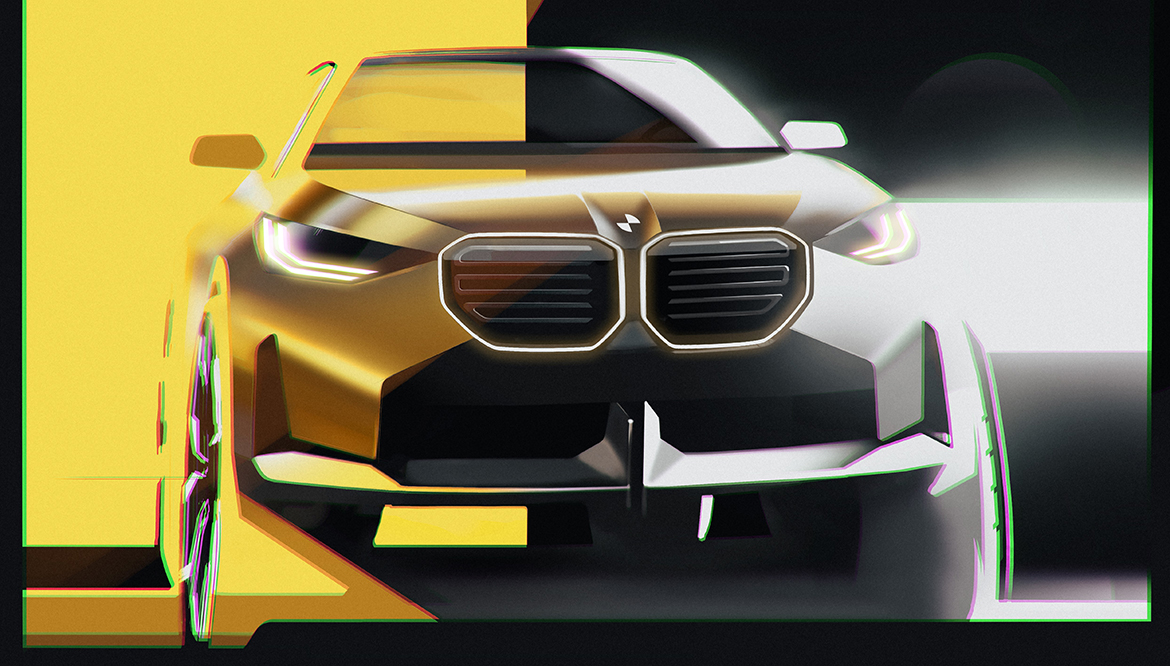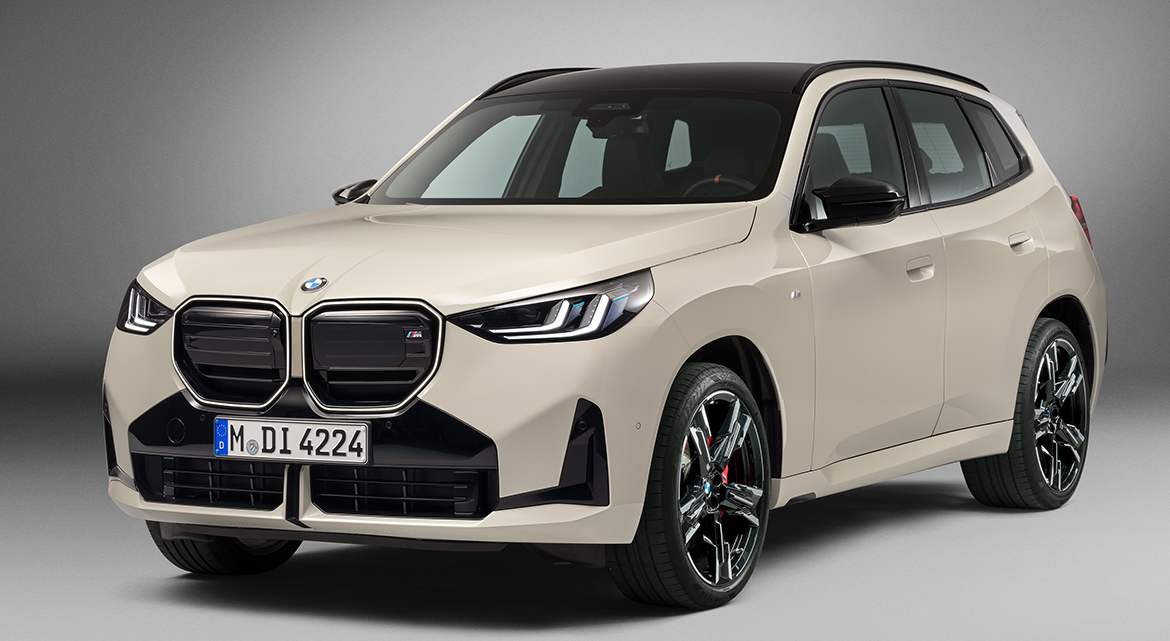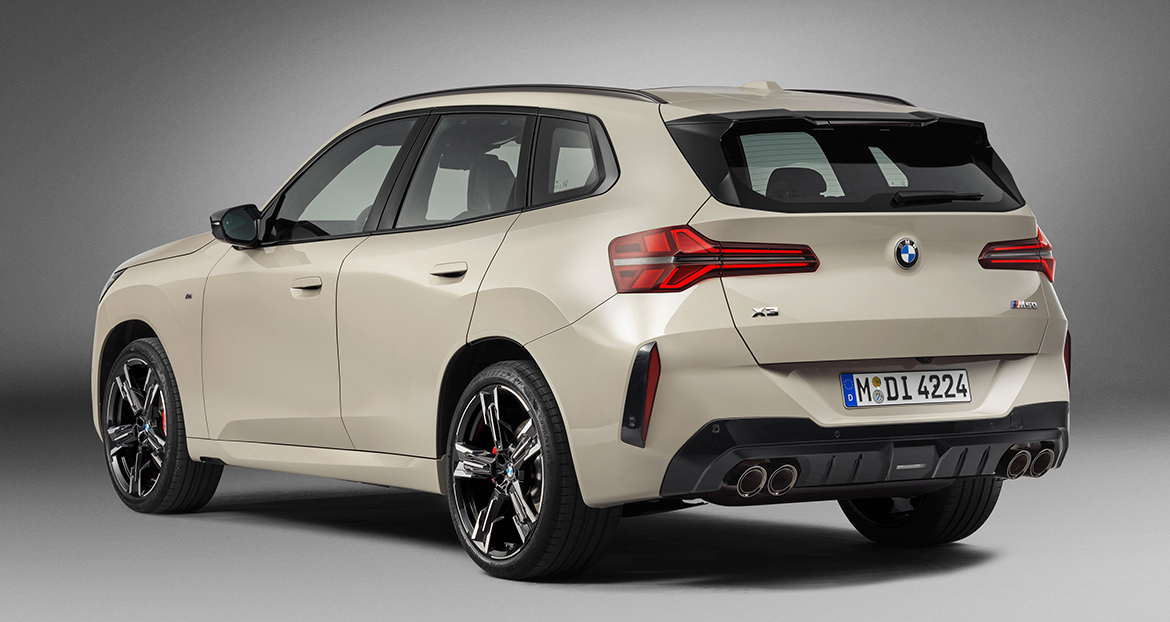More assertive and determined. The new BMW X3 has stepped on the accelerator compared to the previous generation in its quest for sportiness. The model, designed by the BMW design team led by Domagoj Dukec, ushers in a new design language that is said to give it a certain dynamic grace. Proportionate surfaces combine with a few well-defined lines to produce a clearly structured exterior reduced to the essentials. The new BMW X3 is 34 millimetres longer than its predecessor (4,755 millimetres), while width has increased by 29 millimetres to 1,920 millimetres. Together with a 25 millimetre reduction in vehicle height to 1,660 millimetres and wider track widths, this results in a very powerful and sporty look.
The large BMW double kidney grille at the vertical front of the new BMW X3 gives it a strong presence. A new structure for the interior of the grille, consisting of vertically and diagonally arranged bars, adds a fresh touch. Side skirts and a roofline extended deep into the rear are the distinguishing features of the X3’s sporty silhouette, while a new interpretation of the characteristic T-shaped headlamp graphics and a satin-finished horizontal bar with integrated turn indicators help give the rear light clusters a very modern appearance.
The BMW Curved Display, the Interaction Bar, the flat-bottomed steering wheel and the gearstick lever integrated in the console are the elements that define the German premium brand’s new interpretation of the interior. Other elements specific to the new X3 are the luminous details in a contrasting colour in the centre console and door trim: In the doors in particular, they form a border around the function buttons, ventilation controls, air vents and door handles.













